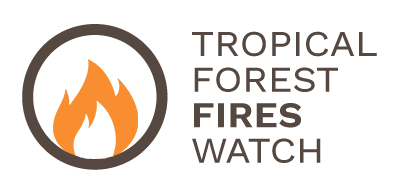Mapping the deforestation footprint of nations reveals growing threat to tropical forests (2021)
This study quantifies and maps changes in global deforestation footprints over 15 years (2001–2015). It finds that many developed countries have increased the deforestation embodied in their imports, of which tropical forests are the most threatened biome. Consumption patterns of G7 countries drive an average loss of 3.9 trees per person per year. Some of the hotspots of deforestation are Southeast Asia, Madagascar, Liberia, Central America and the Amazonian rainforest.
Grasslands and Open Savannas of the Dry Chaco (2020)
This paper summarises the knowledge about Dry Chaco. It also estimates current grazing stock rates on natural grasslands and savannas to propose an alternative approach to sustainably intensifying the use of these ecosystems.
Near-complete loss of fire-resistant primary tropical forest cover in Sumatra and Kalimantan (2020)
This paper assesses the scale of loss and fragmentation of tropical forests in the Indonesian islands of Sumatra and Kalimantan. It found that primary forests are severely fragmented or degraded due to proximity to the forest edge. It also reveals that only 10% of the forest left remains fire-resistant.
White-Sand Savannas Expand at the Core of the Amazon After Forest Wildfires (2021)
This paper maps 40 years of wildfire history and looks at whether repeatedly burnt forests can be replaced by white-sand savanna ecosystems. It finds that white-sand savannas are expanding in the heart of the Amazon as a result of recurring forest fires.
Clarifying Amazonia’s burning crisis (2019)
In a letter to the editor of Global Change Biology in the wake of the 2019 wildfire season, four academics evaluate the nature and extent of burning in the Amazon, comparing it to the Brazilian government’s claim that it was a “normal” year. They find that the number of active fires in August 2019 was the highest since 2010.
Amazonian Biomass Burning Enhances Tropical Andean Glaciers Melting (2019)
This paper demonstrates that the black carbon emitted during fires in the Amazon Basin contributes to the melting of tropical glaciers in the Andes. It finds that, in 2010, runoff increased by 4.5% during the peak fire season.
Modeling peat- and forestland conversion by oil palm smallholders in Indonesian Borneo (2019)
This paper looks at who is responsible for the expansion of palm oil plantations in Indonesian Borneo. It finds that independent smallholders are increasingly converting peatland due to the rising scarcity of suitable land on ordinary soil, and that the smallholders undertaking these damaging activities are likely to belong to Indigenous groups rather than be experienced oil palm farmers.
A human-driven decline in global burned area (2017)
This paper shows that global burned area declined by around 25% over the past 18 years, largely in grasslands and savannas, because of the expansion of agriculture into these areas.
Reserves Protect against Deforestation Fires in the Amazon (2009)
This paper looks at the effectiveness of reserves designed to conserve forests and biodiversity in also avoiding wildfires. It concludes that reserves clearly prevent deforestation fires, but the extent depends on the level of protection afforded to the reserve in question.
